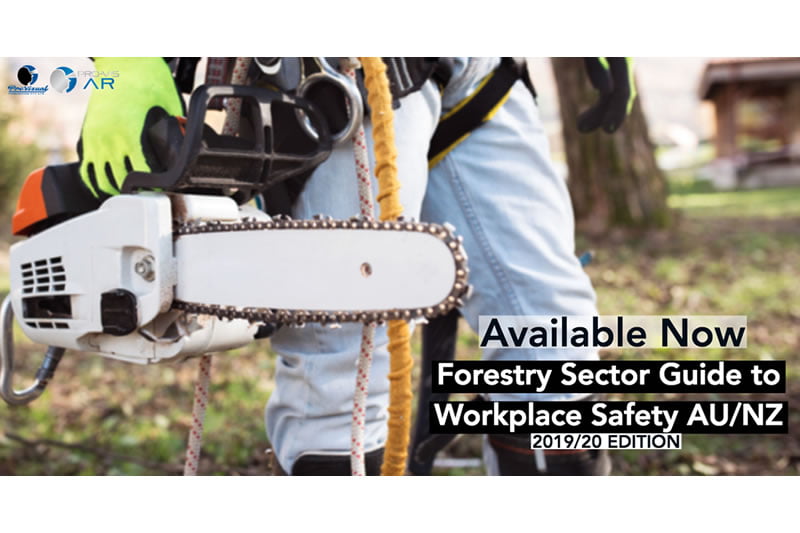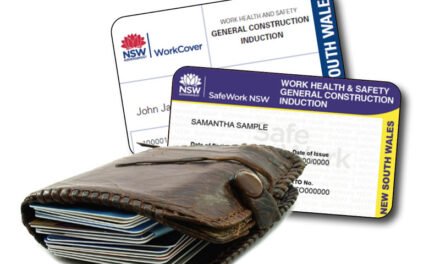Industry groups and associations are focussed on increasing safety in the timber industry.
To be blunt, most safety initiatives are a bit boring. But they can all save or make your business money, which is anything but dull. In most cases that comes through productivity gains thanks to better work practices and happier staff, as well as in insurance premiums not increased by claims and no penalties for infringements or, much worse, costs of managing injuries.
But the system is complex. Safe Work Australia leads the development of policies related to Workplace Health and Safety (WH&S), but is not a regulator and has no enforcement powers.
The regulating agencies and approved codes of practice are particular to your state or territory, which becomes particularly complex for issues that cross state and territory lines, such as freight.
The Australian Government Business portal (www.business.gov.au) has an excellent overview titled WHS/OH&S acts, regulations and codes of practice on their website that sets out the basis for each state and territory. This includes the pertinent Act, which “outlines your responsibilities and duties as an employer and business owner”; the Regulations, which set the “standards you need to meet for specific hazards and risks” as well as necessary licenses, records and reports; Codes of Practice; contact details for the regulators and resources that apply to that state or territory.
It’s a lot of reading: the current NSW Work Health and Safety Act is 127 pages in PDF form, and it doesn’t cover everything you need to know in that state.
Accordingly, the regulating bodies in each state have produced a series of guides targeted at specific industry sectors, but, as mentioned in the introduction, those sectors are still overly broad. This is why most timber industry organisations have their own safety training courses and services such as audits to help meet the needs of everyone from builders working in timber to suppliers, frame and truss, sawmills and forestry.
Using industry resources helps you to meet your regulatory requirements, and also gives you the benefit of the organisations’ years of experience: some of the situations they have seen play out make truly effective warning tales for companies that are not as focused on a workplace safety culture as they could be.
Read on for some of the resources available to you.
SAFETY POSTER
‘If you can see it, you can be it’ isn’t just an aspirational statement; when it comes to safety, it’s a reminder of the importance of accessible information.
Pro-Visual Publishing, in conjunction with the Australian Forest Contractors Association, Australian Forest Growers, New Zealand Institute of Safety Management, Minter Ellison Rudd Watt Lawyers and Forest Industry Safety Council have released the Augmented Reality (AR) Forestry Sector Guide to Workplace Safety AU/NZ 2019/20. Thanks to the generous list of sponsors above, this guide is distributed free of charge to forestry sector workplaces in Australia and New Zealand.
This wall-mountable printed guide is designed to be displayed in a place where workers will have easy access to view on a regular basis. It addresses:
- Loading and Unloading Logs.
- Emergency Plans and Procedures.
- Working in Hot Conditions.
Workers can also download the free Pro-Vis AR app and scan any AR capable content on the guide to instantly access further safety information (including videos, web links and PDFs) straight to their smart device.
For more, or for additional copies, call (02) 8272 2611, email marketing@provisual.com.au or visit www.provisual.com.au
TABMA training
One of the country’s leading training organisations, TABMA offers a range of services including safety-specific short courses, which include the following.
Workplace Health Safety – are you compliant – the MUST haves?
This workshop will help participants understand important obligations in relation to compliance and key strategies that can be implemented to ensure a safe and healthy work environment. Key topics include:
- How to assess and control risk
- Typical hazards in the workplace
- How to effectively report safety concerns
- Environmental strategies and emergency procedures
- How to develop a safety first culture
Chain of Responsibility
The principle behind the chain of responsibility concept is simple – any party who has control in the transport chain can be held responsible and can be liable for non-compliance. If you consign, pack, load or receive goods as part of your business, you could be held legally liable for breaches of the Heavy Vehicle National Law (HVNL) even though you have no direct role in driving or operating a heavy vehicle. In addition, corporate entities, directors, partners and managers/supervisors are accountable for the actions of people under their control. This is the Chain of Responsibility (CoR).
If your actions, inactions or demands cause or contribute to road safety breaches then you can be legally accountable. Authorities will investigate the supply chain and up and down the corporate chain of command. The days of ‘all care and no responsibility’ are over.
Changes to the CoR laws are now in force. These changes align CoR laws more closely with workplace health and safety laws and the provisions apply equally to employees and subcontractors.
The aim of CoR is to make sure everyone in the supply chain shares equal responsibility for ensuring breaches of the HVNL do not occur. This half-day workshop is designed to ensure all relevant staff are aware of their responsibilities, particularly in relation to reporting any possible breaches of compliance.
Manual Handling Techniques
The TABMA manual handling workshop focuses on safety and will provide clear strategies to staff members on how to identify and prevent muscular skeletal injuries in the workplace.
The workshop is suited for anyone that lifts, lowers, pushes, pulls and carries material in the workplace.
Workshop content includes hazard and risk identification, injury prevention and using correct lifting techniques and will consist of both theory and practical training.
Other safety initiatives from TABMA include WH&S inspection and audit services. Available in various levels ranging from a diagnostic look at your processes to a full system audit, there are fee discounts for members and a regular review process can be scheduled. Each level of inspection looks at your company on site and talks with relevant managers to gain a specific understanding of your practices. Reports are provided at the conclusion.
Test and tagging services check all electrical equipment with electrical testing equipment and place a tag on the item to confirm that the item is serviceable.
There are also services to assist businesses with the development and review of Safe Work Method Statements and Operating Procedures. This can be conducted on site with the relevant people or documents can be emailed to TABMA for review. The association’s WHS Advice program allows managers to contact TABMA regarding any WHS issues that they may have within their workplace. The advice provided comes from relevant state legislation documents including the Act, Regulations and Codes of Practice, but is not legal advice. Custom services are also available for companies with other needs.
For details, contact TABMA national training and development manager, Steve Cunningham at steve@tabma.com.au or visit www.tabma.com.au.
MGA TMA courses
For those in the more retail-oriented parts of the industry, MGA TMA’s renowned legal services are available to assist your business in strategies for avoiding incidents as well as providing guidance for injured workers.
They also offer a wide range of safety-oriented online training modules, including:
- Administer WH&S
- Manual handling
- WH&S induction
- Emergency management
- Bullying and harassment in the workplace
- Hazard identification and risk assessment
- Ladder safety
- Moving pallets manually
- Pallet jack safety
- Prevention of falls from heights
- Slips and trips
- Safe work instructions are available for the following topic areas:
- Broken and faulty equipment
- Cleaning with chemicals
- Emergency management evacuation
- Forklift safety
- Lift platforms
- Medical emergency
- Pallet jacks
- Scissor lift
- Walker stacker safety
- Gas cylinders
- Circular saw
- Chainsaw
- Bandsaw
- Loading bays
- Mezzanine safety
- Using knives safely
which cover most aspects of working in warehousing or hardware.
For more on the wide range of WH&S member services offered, visit www.mgatma.com.au
TTIA safety services
As part of TTIA membership, companies have access to a range of WH&S training services at competitive rates and can subscribe to a comprehensive safety program that includes:
Assisting companies with their WH&S documentation – putting a documented safety system in place consumes a lot of time, so TTIA has produced a safety system for the Timber Industry and can assist companies to adapt this system to their own workplace and provide training in its effective implementation.
Conducting safety assessments and safety audits that are specially tailored to particular workplaces and ensure management and workers know and are able to implement the safety strategy.
WH&S training, with a range of accredited training courses for managers, supervisors, safety representatives and workers at a cost effective price (including fire training and updates to WH&S and WorkCover (WC) legislation).
Other services offered include expert advice available via phone, fax or email to answer questions concerning WH&S or WC. TTIA’s solicitor can assist companies in the event of a WorkCover Prosecution, and the association can also help with general Workers Compensation issues including premium determinations, claims estimates and negotiation with insurance companies. Additionally, TTIA represents member companies through consultation with WorkCover and other government bodies in relation to the formulation of WH&S and WC legislation, regulations, Industry Codes of Practice and Australian Standards.
Practical assistance comes in the form of offering engineering solutions to WH&S problems, noise testing, sample WH&S procedures and safety operating procedures for machinery in the logging, sawmilling, timber dressing and frame and truss sectors of the timber industry.
For more details on the TTIA WH&S scheme, contact Ken Hocking on 0418 280 335. For TTIA membership, call Judith Sharp (02) 9264 0011.
Many other industry associations also have excellent programs in place. Contact yours directly to see what is available.
For more, visit www.safeworkaustralia.gov.au, www.business.gov.au, www.tabma.com.au, www.mgatma.com.au or www.ttia.asn.au












